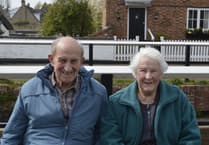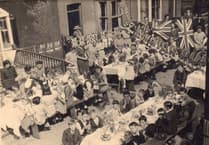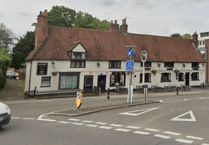WHEN groceries came by horse and cart, sugar was sold loose in blue pound bags, and a cobblers where commuters left their shoes to be repaired in the morning and collected them that evening are just some of the many shops that have disappeared from Alton’s streets.
However, those retail outlets and the people who worked or shopped in them are now recorded in a Memories of Alton Project run by Alton U3 Local History Group and published by the Friends of the Curtis Museum and Allen Gallery.
This is the third in the series Shops and Shopkeepers, edited by Paul Fenwick, and it brings to life all those traders who not only gave long hours of service to customers but added colour and character to the town.
People such as grocer Wilfred Shipley, who owned several shops in the town, two in the High Street, and whom Shipley Court is named after. He also had van that he use to operate a delivery service to the surrounding villages.
In his shops, butter was weighed and made up with wooden pats before being wrapped, spices came in little twits of paper and you could buy broken biscuits by the pound. He also owned a bakery and used a horse and cart to deliver bread around town.
Another well-known bakers was Adlam’s at 26 High Street, which, between the wars had a staff of 50 and a lot of horses and carts delivering both bread and confectionery.
In the book Sheila Blackwell, who worked for Adlam’s recalls “If the bread ran out they would bake more as they didn’t like to refuse anyone and we used to load up the van or the cart. It was unwrapped and all fresh and it there was any stale bread left they used to take it to St Mary’s Home to make bread puddings.”
At Tricky’s Domestic Stores at 22 Market Street, formerly Scarrott’s, near the town hall, they sold glass ware and china and paint and wallpaper but during the war paper production stopped.
There were a lot of clothes shops in Alton and one of the biggest was Johnson’s which stood on the site now occupied by Boots and was known as Johnson’s Corner. The Plough Inn next to it was also demolished when the site was developed.
There was also a bespoke tailors in Market Street, the first lock-up shop run by Les Packett and Chesterfields, where the banks are now at 42 High Street and it specialised in school uniforms and dressmaking materials. Many shoe shops provided children’s shoes and latest styles for female customers.
A Mr Werner, suffered from polio, ran a cobbler’s shop in Normandy Street, opposite the cinema and commuters would leave their shoes before catching their morning train and pick them up later the same day.
John Knight owned a confectioners at 104 High Street and was the first in the town to sell ice cream wrapped with inch thick paper while Greogry’s was a major newsagent in Alton with more than one shop. Les Human recalls delivering papers as a boy working from the shop at 9 Anstey Road and covering a round that took him up the High Street and as far as Market Street.
“If the papers arrived later than half past six we had to collect them from the station. I had to hurry to get my round finished in time for school at 9am. I got paid 8/6d (43p) for six days.”
There were several cycle shops and one was owned by Sidney Mortara who also ran a fish game and poultry shop at 64 High Street. The fish came packed in ice in barrels from Grimsby and Mr Mortara bought the chickens from local farms and sent up to London to be sold. In the evening they sold fried fish.
At Christmas the front of the shop was full of game, turkeys, chickens and geese and they had to hire a night watchman to make sure nothing was stolen.
The rails of the shop on which the game was hung can still be seen over the jewellers that now stands on the site. Not far away was Kingdon’s the ironmongers who also had a tinsmith and plumbers customers could hire to do work for them.
There were several ladies hairdressers and in those days “You had your own cubicle which was curtained off and private with your own basin and dryer recalls Barbara Stent who used to work at Diana’s where the now closed Between the Lines stands and where she learnt to do Marcel waves and pin curls.
A popular butcher was Goodfellows at the bottom of Crown Hill which had a slaughterhouse at the back, “And it was nothing to see bullocks being driven through the High Street to be slaughtered after market day”.
The arrival of Woolworths, which first opened on the north side of the High Street, just before the war was to affect a lot of the small shops as it sold nearly all the goods they were selling under one roof but Barbara Small recalls she wasn’t allowed to go in the store “Because it wasn’t suitable for girls from Eggar’s Grammar School.”
The book also had passages on long forgotten village shops and evokes a time when people shopped every day and is highlighted with nostalgic old photographs or pen and ink sketches by Patricia Fenwick.





Comments
This article has no comments yet. Be the first to leave a comment.